#bruno maderna
Photo

John G. Ross, (photograph), Alexander Calder during rehearsals for Work in Progress, Teatro dell'Opera, Roma, 1968 [© Calder Foundation, New York, NY. © Estate of John G. Ross]
#art#theatre#theater#sculpture#performance#ballet#photography#john g. ross#alexander calder#niccolò castiglione#aldo clemente#bruno maderna#teatro dell'opera roma#1960s
695 notes
·
View notes
Text
Quadrivium
Bruno Maderna (21 aprile 1920 - 1973): Quadrivium per quattro gruppi orchestrali (1969). Orchestra della Fondazione Arena di Verona, dir. Carlo Miotto.
youtube
View On WordPress
2 notes
·
View notes
Text
youtube
Bruno Maderna: Quartetto per archi in due tempi (1955), performed by Arditti Quartet
0 notes
Text
Interview mit Peter Strickland ✍
Interview mit Peter Strickland ✍
Rapid Eye Movies luden am 08.06.2013 zum Interview nach Berlin ein. Udo und Tobe waren Feuer & Flamme, packten ihre Taschen und fuhren voller Euphorie nach Berlin. Die Chance, auf Peter Strickland und Toby Jones zu treffen, wollten sie sich nicht entgehen lassen. Denn nach der Sichtung von Berberian Sound Studio, schwirrten ihn einige Fragen durch den Kopf und diese wollten aufgelöst…

View On WordPress
#70er#Akzente#Avantgarde#Berberian Sound Studio#Bruno Maderna#Cipriani#Claudio Simonetti#Dario Argento#Death Laid An Egg#Dialekt#Ennio Morricone#Exploitation#Giallo#Giulio Questi#Goblin#Gothic Horror#Gruppo di improvvisazione nuova consonanza#Horror#Italienisches Kino#Lost In Translation#Luigi Nono#Mario Bava#Peter Strickland#Produktion#Retro#Shining#Suspiria#Toby Jones#Tonia Sotiropoulou#Vintage
0 notes
Text
Cesena: "Le due Americhe" al Teatro Bonci
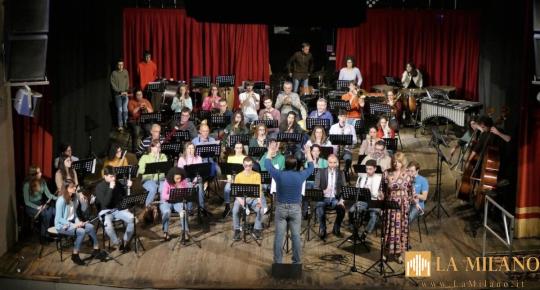
Cesena: "Le due Americhe" al Teatro Bonci.
Venerdì 28 aprile (ore 21.00) chiude la Stagione del Teatro Bonci di Cesena Le due Americhe, concerto del grande organico di fiati Maderna Wind Orchestra diretto dal Maestro Marco Lugaresi, con un programma che guarda alla terra di elezione del genere Wind, con brani di Gershwin, Bernstein, Mancini, Bacharach, Jobim e temi popolari del sud America arrangiati da Giorgio Babbini.
Lo spettacolo è presentato in collaborazione con Gruppo HERA.
Nata dalla tradizione della musica marziale europea, la Wind Orchestra inizia dai primi decenni del XX secolo a diventare una formazione autonoma, di destinazione non più militare ma civile, con un repertorio originale appositamente composto per l’organico di fiati, a cui spesso si aggiungono le percussioni. È soprattutto in America che questa tradizione si consolida, innestandosi anche sulla straordinaria scuola dedicata agli ottoni, fulcro dell’ensemble.
La Wind Orchestra del Maderna nasce da un progetto del Conservatorio di Cesena, che raccoglie tutti gli strumentisti a fiato dell’Istituzione insieme a musicisti della Romagna, creando una rete di collaborazioni decisamente nuova nel panorama musicale del territorio, dove giovani e giovanissimi hanno l’opportunità di lavorare fianco a fianco con professionisti di alto livello.
Marco Lugaresi, cesenate, ha studiato in Italia con Lorenzo Bettini e successivamente in Germania con Eberhard Marschall presso la Musikhochschule di Monaco di Baviera. Come primo fagotto ha suonato con realtà come Chamber Orchestra of Europe, Camerata di New York, Basel Sinfonietta, Teatro La Fenice di Venezia, Arturo Toscanini di Parma, Accademia Bizantina di Ravenna, Orchestra del Teatro Lirico di Cagliari, Cadaques Orchestra. Dal 2003 è primo fagotto solista con le orchestre Camerata Academica di Salisburgo e Città Aperta. Attualmente docente del Conservatorio “Bruno Maderna” di Cesena, è regolarmente invitato a tenere master presso la "Guildhall school", il “Royal College” e la “Royal Academy” di Londra....
#notizie #news #breakingnews #cronaca #politica #eventi #sport #moda
Read the full article
3 notes
·
View notes
Text
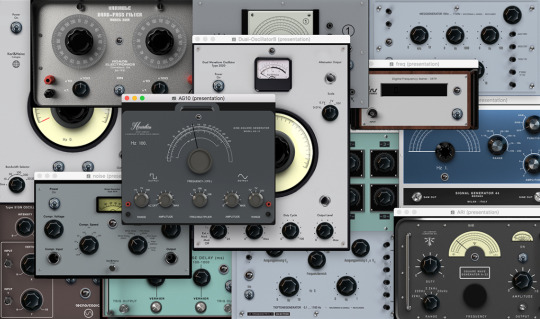
The Cradles of Electronic Music – Part 1
Pioneering spirit, unbridled curiosity, radicalism in artistic thinking, dissatisfaction with the status quo and the rejection of any boundaries shaped the climate into which electronic music was born. Artists and technicians, musicians and physicists were the parents who brought new music to the world in the 1950s - electronic music. Some of them called their works timbre music, others still stuck to terms like atonal music for a while, not having found a more adequate term yet. (Just to set things right: “atonal music” simply means not adhering to traditional harmonic concepts of a key and/or a mode – that´s it, no specific relation to electronics at all.)
In Cologne it were people like Werner Meyer-Eppler, a physicist and information theorist who had published a book about producing music using only electronics back in 1949.
And Rober Beyer, a composer and audio engineer, who had been thinking of a so called “Klangfarbenmusik” (timbre music) since the 1920s (not thinking exclusively of electronic equippment though).
The composer and music journalist Herbert Eimert was one of the other participants of the founding meeting of the NWDR (later WDR) “Studio für Elektronische Musik”. Eimert had been a “musical rebel since he started studying musical composition in 1919. His works and musical ideas were radical to such an amount, that he was expelled from the composition class at the Cologne “Musikhochschule”.
Fritz Enkel was the technician, who took up the ideas of the aforementioned musicians and scientists, put them into an “electro-technical” concept and brought the studio to real life.
Later composers and muscologists like Karlheinz Stockhausen and others used this studio for their musical artwork.
And also in Milan is was the liaison of music and science that brought to life the “Studio di Fonologia Musicale”. The musicians Bruno Maderna and Luciano Berio initiated it and together with the physicist Alfredo Lietti, who developed the technical concept, they created the biggest studio of this kind and of their time, even better and larger equipped that the studio in Cologne.
Luciano Berio´s earlier works were influenced by Igor Stravinsky. He entered the realm of early electronic music from a rather serial approach. Later indeterminacy and probability became more and more important in his compositions and productions. Spoken words became a poart of his pieces soon after he started working at the Studio di Fonologia Musicale.
Bruno Maderna was not a composer based mainly in electronic music. Electronic music was “just” one of the fields he worked on. Maderna was a real “multi-genre” composer (and conductor, and teacher): orchestral works, kind of chamber music, music for specific instruments, electronic music. It´s interesting, that he also composed a work for non-electronic instruments (flute and cymbals) plus tape, introducing tape to live performances even before Xenakis did so.
Alfredo Lietti designed and manufactured most of the equipment of the studio in Milan. It was essential for the “birth” of this studio, that Lietti was able to transfer the ideas and needs of the two musicians into technical instruments, which he invented and made. Another extraordinary feature was his skilfulness in using parts of broken electronic devices, designing whole circuits around them to reach the goal, that was set by the musicians. After leaving RAI in 1962 he worked at the Plasma Physics Research Center in Lausanne.
The charm and appeal of these “old” techniques, the workflow, that these machines ask for, a workflow so much different from how we are used to produce our music today, has never stopped to attract artists and make them try to take more than just a “sniff”, but to produce some works with the technique of the 1950s/60s. The studio in Cologne is still available. The picture shows the German musician Bernd-Michael Land while working on the “Aliens-Project” in 2018.
… to be continued
(This series is going to be consecutively published on https://www.dev.rofilm-media.net/node/507)
#electronicmusic#earlyelectronicmusic#herberteimert#lusioanoberio#experimentalmusic#experimentalelectronicmusic#musicofthe50s#electronicmusicstudio#electrosound#electromusic#howelectronicmusicbegan#music#sound#musicproduction#sounddesign#electronicmusicproduction#vintagestudio#vintageelectronic#vintagemusic#vintagesound
2 notes
·
View notes
Text
Alec
Radcliff Alec
Music Composer
Berio was born in Oneglia (now part of Imperia). He was taught the piano by his father and grandfather who were both organists. During World War II he was conscripted into the army, but on his first day, he injured his hand while learning how a gun worked, and spent time in a military hospital. Following the war, Berio studied at the Milan Conservatory under Giulio Cesare Paribeni and Giorgio Federico Ghedini. He was unable to continue studying the piano because of his injured hand, so instead concentrated on composition. In 1947 came the first public performance of one of his works, a suite for piano. Berio made a living at this time accompanying singing classes, and it was in doing this that he met the American mezzo-soprano Cathy Berberian, whom he married shortly after graduating (they divorced in 1964). Berio wrote a number of pieces which exploit her distinctive voice.
Improvising - Berlin, Germany - May 1987
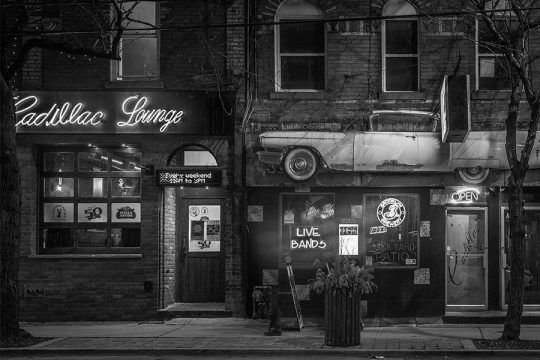
Where it all started - Toronto, Canada - May 1975
In 1952, Berio went to the United States to study with Luigi Dallapiccola at Tanglewood, from whom he gained an interest in serialism. He later attended the Internationale Ferienkurse für Neue Musik at Darmstadt, where he met Pierre Boulez, Karlheinz Stockhausen, György Ligeti and Mauricio Kagel. He became interested in electronic music, co-founding the Studio di fonologia musicale, an electronic music studio in Milan, with Bruno Maderna in 1955. He invited a number of significant composers to work there, among them Henri Pousseur and John Cage. He also produced an electronic music periodical, Incontri Musicali.
In 1960, Berio returned to Tanglewood, this time as Composer in Residence, and in 1962, on an invitation from Darius Milhaud, took a teaching post at Mills College in Oakland, California. From 1960 to 1962 Berio also taught at the Dartington International Summer School. In 1965 he began to teach at the Juilliard School, and there he founded the Juilliard Ensemble, a group dedicated to performances of contemporary music. In 1966, he again married, this time to the noted philosopher of science Susan Oyama (they divorced in 1972). His students included Louis Andriessen, Steven Gellman, Dina Koston, Steve Reich, Luca Francesconi, Giulio Castagnoli, Flavio Emilio Scogna, William Schimmel and Phil Lesh of the Grateful Dead.
https://www.youtube.com/watch?v=LqoV4ZW7xTA
Discography
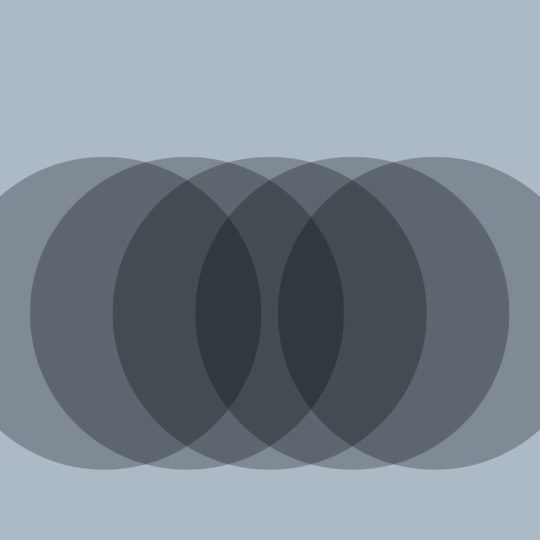
Lost Horizons
Elementor records
iTunes

Elements
Elementor records
iTunes

The Form
Elementor records
iTunes
Events
18 September
2017
Blue Note
New York City
Get Tickets
21 October
2017
Preservation Hall
New Orleans
Get Tickets
12 November
2017
Bimhuis
Amsterdam
Get Tickets
19 December
2017
Tramjazz
Rome
Get Tickets
Radcliff Alec
Music Composer
+1 1234 56789
Soundcloud
Instagram
Youtube
Vimeo-v
Read the full article
0 notes
Text
ZARATHUSTRA E L'UOMO MODERNO
Foto: M.° Tito Ceccherini © Orchestra Sinfonica di Milano
Divisi tra tardo Romanticismo e avanguardia novecentesca, Richard Strauss e Bruno Maderna ci conducono nei loro mondi visionari. Scritto sul finire dell’Ottocento, nel poema sinfonico Also Sprach Zarathustra Strauss dipinge l’immaginario di uno dei più importanti testi della filosofia, l’omonimo libro di Friedrich Nietzsche. Una metaforica…

View On WordPress
0 notes
Photo

“𝑺𝒆𝒎𝒑𝒓𝒆 𝒑𝒊ù 𝒑𝒆𝒏𝒔𝒐 𝒄𝒉𝒆 𝒑𝒆𝒓 𝒄𝒓𝒆𝒂𝒓𝒆 𝒊𝒏 𝒎𝒐𝒅𝒐 𝒆𝒇𝒇𝒊𝒄𝒂𝒄𝒆 𝒃𝒊𝒔𝒐𝒈𝒏𝒂 𝒄𝒐𝒏𝒔𝒊𝒅𝒆𝒓𝒂𝒓𝒆 𝒊𝒍 𝒅𝒆𝒍𝒊𝒓𝒊𝒐 𝒆 𝒐𝒓𝒈𝒂𝒏𝒊𝒛𝒛𝒂𝒓𝒍𝒐"
𝐋𝐀 𝐌𝐔𝐒𝐈𝐂𝐀 𝐂𝐎𝐌𝐄 𝐏𝐑𝐀𝐓𝐈𝐂𝐀 𝐃𝐄𝐋𝐋'𝐈𝐌𝐏𝐎𝐒𝐒𝐈𝐁𝐈𝐋𝐄 - Monografie oltre ai generi𝗣𝗶𝗲𝗿𝗿𝗲 𝗕𝗼𝘂𝗹𝗲𝘇: 𝗹'𝗶𝗻𝗾𝘂𝗶𝗲𝘁𝗼 𝗲 𝗶𝗹 𝗿𝗶𝗴𝗼𝗿𝗲
🎧 𝐀𝐒𝐂𝐎𝐋𝐓𝐀 𝐈𝐋 𝐏𝐎𝐃𝐂𝐀𝐒𝐓
Nelle precedenti puntate del programma, abbiamo più volte narrato del grande movimento d’avanguardia musicale europeo, concentratosi in particolare a Darmstadt, durante agli anni ’50 del secolo scorso, il punto di partenza in azione e reazione di tutto quello che andrà a seguire nel Novecento. Lo abbiamo visto attraverso le monografie su Bruno Maderna, Luigi Nono, György Ligeti, Iannis Xenakis, Karlheinz Stockhausen e in dialettica opposta o complementare anche John Cage e Giacinto Scelsi. Come un'ideale chiusura del cerchio, andiamo oggi alla scoperta di uno dei più carismatici, per certi tratti autoritari e sicuramente influenti personaggi di quegli anni, il compositore e direttore d’orchestra francese Pierre Boulez.
In gioventù Boulez si ritirò dagli studi matematici per intraprendere quelli musicali anche se i primi influenzeranno particolarmente il suo approccio alla composizione. Con il trasferimento a Parigi avviò una vera e propria rivoluzione musicale insieme a Stockhausen appunto e al belga Henri Pousseur, accentuata dall’incontro con il giovane John Cage durante gli anni Sessanta. Proprio nella capitale francese fondò nel 1970 l’IRCAM, l’istituto per l’esplorazione e lo sviluppo della musica moderna.
Compositore innovativo e aperto alla sperimentazione di quegli anni, Pierre Boulez fu anche un’eccezionale direttore d’orchestra, a capo dell’orchestra di Cleveland, la sinfonica della BBC e la Filarmonica di New York in cui contribuì alla diffusione del repertorio di Debussy, Mahler e Stravinsky.
Michele Selva ci porta a conoscere una figura imprescindibile della cosiddetta classica contemporanea, nonché uno dei precursori ella musica elettronica e delle su infinite possibilità.
Un programma a cura di Michele Selva
Regia di Alessandro Renzi
Illustrazione tratta da un’immagine di Artcurial
🎧 𝐀𝐒𝐂𝐎𝐋𝐓𝐀 𝐈𝐋 𝐏𝐎𝐃𝐂𝐀𝐒𝐓
🎶 𝐒𝐂𝐎𝐏𝐑𝐈 𝐈𝐋 𝐂𝐀𝐍𝐀𝐋𝐄 - La Musica come Pratica dell'Impossibile
0 notes
Photo
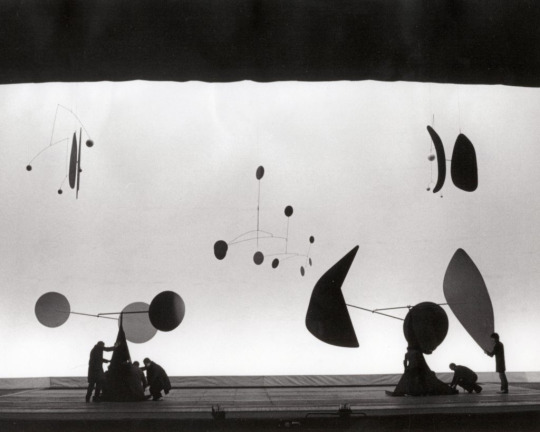
Work in Progress, Ballet originated by Alexander Calder, sets and costumes designed by Alexander Calder, electronic music by Niccolò Castiglione, Aldo Clemente, and Bruno Maderna, Performed at Teatro dell'Opera, Roma, 1968
#art#theatre#theater#sculpture#performance#ballet#photography#alexander calder#niccolò castiglione#aldo clemente#bruno maderna#teatro dell'opera roma#1960s
120 notes
·
View notes
Text
Finché vivi, splendi
Epitaffio di Sicilo. Esegue l’Atrium Musicae de Madrid diretto da Gregório Paniagua.
Molto suggestivo: una delle più antiche composizioni musicali che ci siano pervenute complete, databile fra il II secolo a.C. e il I d.C. È incisa su una stele funeraria rinvenuta nel 1883 a Aydın, presso Tralles, dall’archeologo britannico sir William Mitchell Ramsay. Egli pubblicò il testo, ma non si accorse…
youtube
View On WordPress
0 notes
Photo

Mercredi 9 novembre 2022 à 19H, nouvelle émission de la Petite Boutique Fantasque. On ne réalise toujours pas instantanément la portée d'une disparition. Ainsi en est-il de Jean-Luc Godard. En attendant de reprendre ses esprits ou de faire son deuil je vous propose la diffusion d'un extrait de France tour et détour, deux enfants. On y découvre Godard dans une espèce de maïeutique que l'on retrouve dans Grandeur et décadence d'un petit commerce de cinéma.
Cette émission a été enregistrée et montée au studio de RadioRadioToulouse et diffusée en hertzien, Toulouse : 106.8 Mhz ou en streaming https://www.radioradiotoulouse.net/ et pour tout le reste du temps sur les podcasts de mixcloud.
Programmation musicale :
1) Her's a rainy day (Joe Pass)
2) Silenzio (Lionel Suarez / Airelle Besson)
3) All things beautiful (Nick Cave / Warren Ellis)
4) Le migrateur (Jean-marc Le Bihan)
5) 3e mouvement du 3e concerto pour piano (Béla Bartok) Claude Hellfer / Orchestre national de l'opéra de Monte-Carlo / Bruno Maderna
6) Composition (Richard Galliano / Rony Barrak)
+ extrait de la 1ère émission France tour et détour, deux enfants (Jean-Luc Godard)
Pour ceux qui auraient piscine indienne, ou toute autre obligation, il y a une possibilité de rattrapage avec les podcasts de la PBF : https://www.mixcloud.com/RadioRadioToulouse/la-vérité-sort-elle-de-la-bouche-des-enfants-la-petite-boutique-fantasque/
Sus aux Béotiens !
Photographie de Godard à la caméra en mai 1968
1 note
·
View note
Photo

https://www.mixcloud.com/babilano/put-your-face-in-gwod-366th-revival/
tracks by: The Reverend Lester Knox Of Tifton Georgia, Streets of Lhasa, Bruno Maderna, Joy Orbison, t3g3lst3n, Queen, Throwing Snow, Cola Boyy, DJ Floor, Kucka, Goody Goody, Equiknoxx, Raider Klan, Eli Keszler, Stubborn Heart, Dialect, Marc Almond, Llyr, Car Culture, Jana Rush, Drake/Future/Jana Rush, Li Yilei, 100% Manmade Fiber, Jeph Jerman, The Smiths.
8 notes
·
View notes
Text
youtube
Das WDR Sinfonieorchester spielte im Rahmen von Musik der Zeit [2] Transition "Aura" für großes Orchester von Bruno Maderna unter der Leitung von Sylvain Cambreling.
0 notes
Text
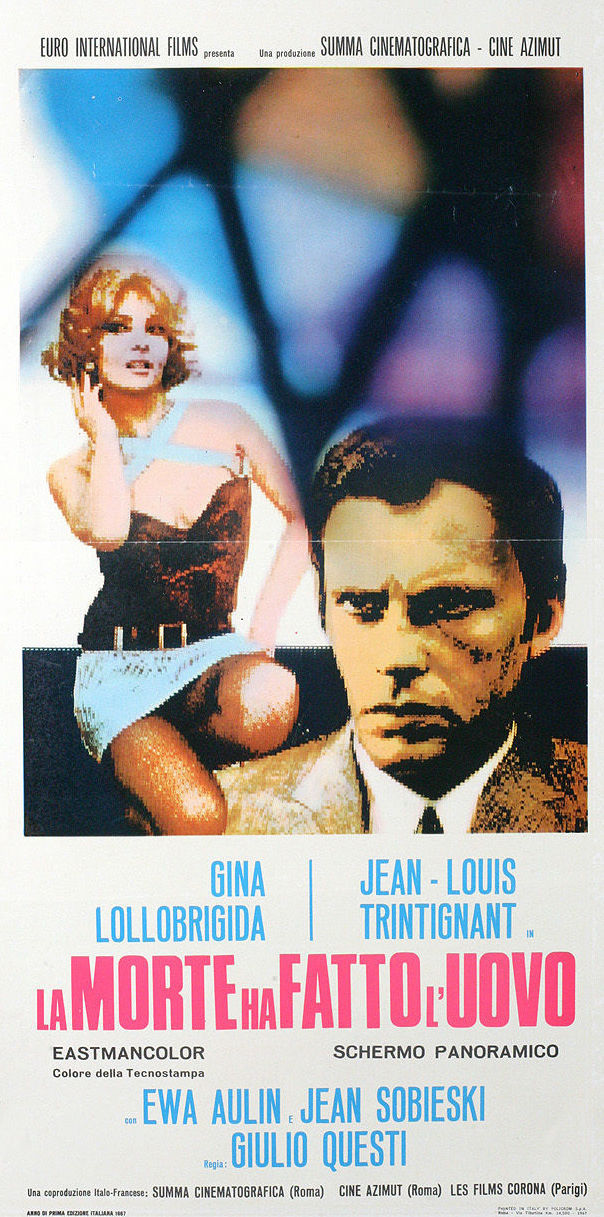
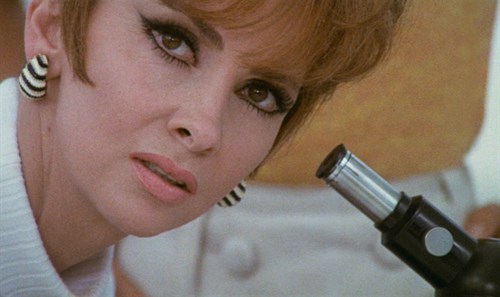





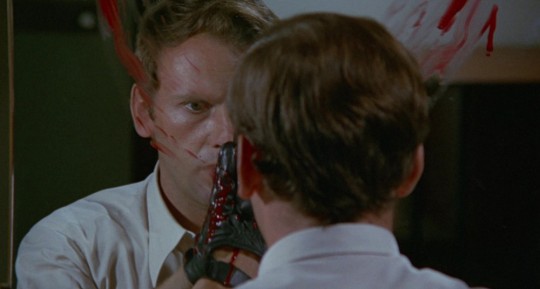


La morte ha fatto l'uovo (Death Laid an Egg, 1968)
"You want to run away? Since when? I thought you liked this life, with the three of us."
"You still don't know me. I'm looking for something definitive."
"You mean love?"
"Why not?"
"I don't think there's anything more undefined."
#La morte ha fatto l'uovo#death laid an egg#italian cinema#giulio questi#films i done watched#Franco Arcalli#Gina Lollobrigida#Jean Louis Trintignant#Ewa Aulin#Jean Sobieski#Renato Romano#Vittorio André#Giulio Donnini#Biagio Pelligra#Cleofe Del Cile#Aldo Bonamano#Ugo Adinolfi#Bruno Maderna#Ohhh delicious‚ delicious cinema‚ finally some good film. I mean don't get me wrong‚ this is a big ymmv case; I can well imagine some would#Hate this film (and the letterboxd reviews are very mixed). Those people are wrong. Take a hoary old thriller plot and the basis for an#Unassuming proto giallo‚ but then shoot it all in a beautifully delicate French new wave inspired style‚ fill the script with faux#Philosophical dialogue‚ and then throw in so many ideas and striking images; everything from anti mechanisation and pro worker sentiments#With a dash of pure science fiction‚ a searing streak of anti capitalist absurdism‚ some unlikely humour and all carried off with such#Sheer confidence‚ such breathless style. All set to a magnificent‚ bizarre score of jangling discordant keys and atonal bleeps and bloops.#Truly unique‚ a real one off. I can see why some might dislike it‚ I can even understand some of the accusations of pretentiousness or of#Incoherent excess; but if only every film could be so unique‚ could be so courageously strange and unapologetically.....itself.#Worth noting that this exists in multiple versions; a shorter‚ streamlined giallo cut may well make for a simpler genre picture but the#Reviews aren't exactly glowing. I watched the full directors cut (probably the same cut that was first released in Italy in 68) with nearly#20 minutes more exposition and weirdness‚ and I appreciated every second. I suspect (again from reading reviews) that the English dub may#Change some plot points quite significantly as well
8 notes
·
View notes